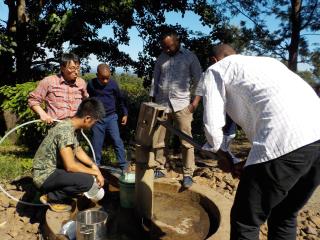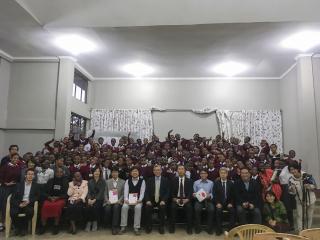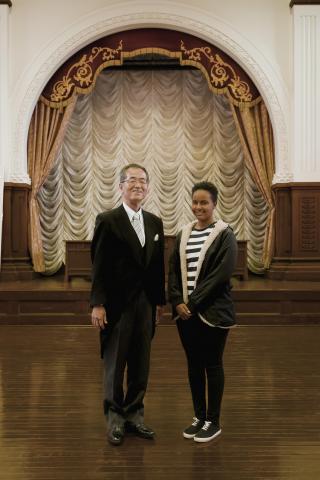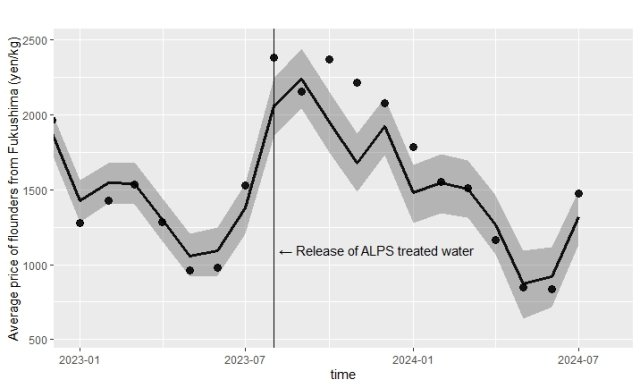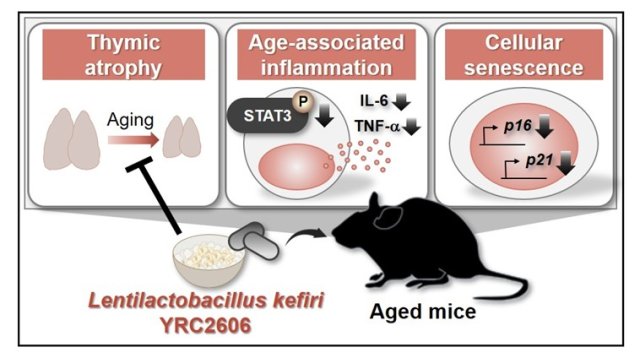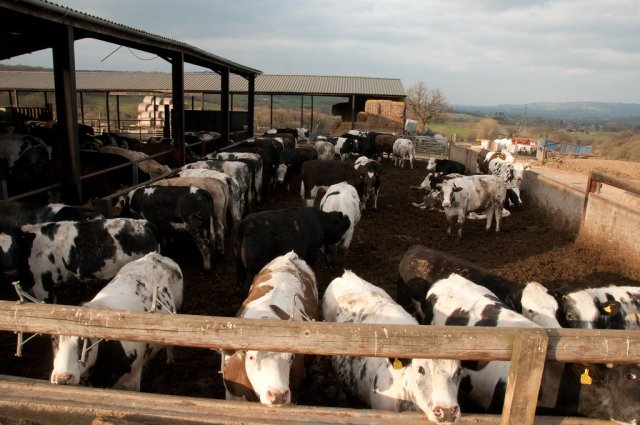【Research Highlight】Safe and Clean Water Supply Project
- Share
- Tweet
- Send to email
Shinshu University Aqua Innovation Center (COI) solves water issues around the world
Shinshu University Aqua Innovation Center (COI) (* 1) is engaged in various research and development projects aiming at the goal of "Contributing to improving thequality of life (QOL) of people around the world by realizing a society with a sound water cycle system".
We would like to introduce this project aimed at solving the grave problem of fluorine pollution in groundwater at Tanzania, with objective of establishing a society where everyone can obtain safe and clean drinking water. Under the leadership of Professor Yoshitani Junichi and Professor Nakaya Shinji, professors from the Research Initiative for Supra-Materials, Faculty of Engineering, and Faculty of Textile Science and Technology have been conducting research in the city of Arusha since 2018, where raw water contains excessive fluoride.
This project has fortified COI’s efforts to attain the goal by merging Professor Nakaya's water quality survey and monitoring, Professor Teshima Katsuya's Shindai Crystal adsorbent, and Professor Kimura Mutsumi's high-sensitivity sensors under the umbrella of Professor Yoshitani’s Integrated Water Resource Management. The COI’s Efforts also contribute to a global water target, SDGs Goal 6: ensure availability and sustainable management of water and sanitation for all.
(* 1) This program supports challenging and high-risk research and development based on the vision of the "Center of Innovation Program (COI STREAM)" set by the Ministry of Education, Culture, Sports, Science and Technology, to foresee the future needs of society, aligned with social goals and a way of life to strive for. There have been 18 bases established around Japan beginning in 2013.
English text based on an article written in Japanese by Ayu Yanagisawa First Published in Shindai NOW (Shinshu University public relations magazine) No. 123, September 30, 2020
What is fluoride pollution that has gotten worse in Tanzania?
A project which utilizes the technological seeds of COI
COI is conducting research and development in the city of Arusha in Tanzania (population 450,000 as of 2012) which is located 60km west of Mt. Kilimanjaro. Located at the foot of Mt. Meru (4,562m), there are many springs and rivers but 60% of household water supplies come from wells underground. Most of this groundwater contains high concentrations of fluoride.
The purpose of this project is to begin a fluorine removal method locally to supply safe, affordable and readily available drinking water to all people. To achieve this purpose, there are two ways to address the fluoride issues at hand:
1. Development and the establishment of a local production system of inorganic crystals (Shindai Crystal) for selecting, separating and removing harmful substances contained in raw water.
2. Elucidating the pollution mechanism of water sources, establishment of a system that can manage water quality sources in an integrated manner with the transfer of technology for sustainable groundwater management.
Fluoride is a substance that is familiar and used in many products from toothpaste to frying pans, but if you drink water with high concentrations of fluoride regularly, one may experience the symptoms of fluorosis. This can cause serious health problems such as holes in tooth enamel that turn brown and bone malformations. The World Health Organization stipulates that the concentration of fluoride in drinking water should be 1.5 ppm or less but the average concentration in the Meru basin including Arusha is 4.5 ppm, while there are not many contaminated areas in the Kilimanjaro basin.
Most of the fluoride pollution is naturally occurring. Experts infer that causes of high fluoride concentration in groundwater are the elution of fluorine ions from the volcanic rocks of Mt. Meru and the minerals of the lava layer flowing into the groundwater. The Tanzanian government has developed a water defluoridation method using a material called "bone char" (* 2), but mass production of high-quality bone char has not been realized, and it has yet to be used for the drinking water supply. The project plans to develop a high-sensitivity chemical sensor and provide a new portable water purification bottle and a simple water purification tank equipped with a high-performance adsorbent as the alternative.
However, issues are not just about water quality. The urban water supply in the center of Arusha works by a mechanism that draws deep groundwater from a borehole (a hole drilled perpendicular to the ground), supplies it to a distribution reservoir, and supplies water to each house or a small store called a "kiosk". Water shortages are also serious in Arusha, where the population is growing rapidly. New bore holes and water infrastructure development such as waterworks and sewage construction are being actively carried out.
However, under no affordable measures against fluoride pollution, developed water sometimes cannot be supplied because of high concentration of fluoride. Even when safe groundwater development is successful, it accelerates depletion of groundwater resources. There are many villages with poor infrastructure outside the center, and many residents use unsanitary wells. The government has prepared deep wells, but they are unfortunately far from living areas and residents struggle to carry water back home. The chore of fetching water also deprives the poor, especially women, of learning opportunities.
The Tanzanian government has set a national goal to become a middle-income country under "Tanzania Development Vision 2025". Access to safe water is touted as necessary to achieve a high standard of living, and the Ministry of Water's "Water Sector Development Plan (2005-2025)" provides 100% access to safe water in urban areas and 90% in rural areas. In 2005, 78% of urban areas and 54% of village areas have announced plans to achieve this. However, Tanzania's population continues to grow and is estimated to grow by more than 36 million in 20 years to 2025. Instead of simply improving water quality and securing water demand, there is a need for sustainable and integrated water resource management.
(* 2) Fluoride remover made by charring animal bones and carbonizing organic matter completely.
Integrating the specialized fields of four professors.
Professor Junichi Yoshitani, who specializes in integrated water resource management, is the principal investigator of this project, and three professors, the Faculty of Engineering and the Faculty of Textile Science and Technology, are participating in on-site surveys and research. Professor Shinji Nakaya is working on the local fact-finding survey. Professor Mutsumi Kimura is working on the development of a high-sensitivity chemical sensor that can detect fluoride concentration, and Professor Katsuya Teshima is working on the development of a water purifier for the purpose of removing excessive fluoride. By using a water purifier and a sensor as a set, you can ensure safe water. A cooperative system among those that deal with water issues in Tanzania such as local research institutes, the government agencies such as the Ministry of Water have been established.
The project also works on environmental education at Sakura Girls Secondary School in Arusha, which has signed a cooperation agreement with our university to contribute to the improvement of science education for women. In March of 2019, a water quality experiment on drinking water was conducted as a learning opportunity for children. The project also takes part in field surveys such as installing rain gauges. However, simply notifying risk may arouse children's anxiety, so interactions continue so concrete solutions can be presented at the same time.
Fluoride pollution is a problem not only in Africa but in countries around the world such as India and China. COI intends to continue to address the world's water problems based on research results from Tanzania.
Key researchers on the Tanzania Project
Realize sustainable water use through an integrated water resource management
Integrated water resource management is a process in which stakeholders discuss and make decisions based on the balance between the economic and social benefits, adverse effects and costs of management alternatives ensuring the sustainability of the natural environment.
"In order to make a effective integrated water resource management plan for Arusha, it is important to assess the in-depth and locally specific circumstance of water problems, and then to develop/apply best available technologies" says Professor Yoshitani.
Not many people in Arusha are aware of fluoride pollution. Due to the recent explosive population increase, securing water supplies has been prioritized over pollution problems, and the disparity between rich and poor is colossal.
About three-quarters of Tanzania's population lives in rural areas without reliable access to electricity. Such disadvantageous circumstances can be a strong motivation to develop sustainable solutions available.
"There are prominent seeds at Shinshu University. Professor Nakaya has a technology of tracing unseen groundwater traveling process, Professor Teshima has a technology of affordable production of defluoridation absorbent, Professor Kimura has a technology of affordable fluoride sensor. They hope to realize a system of sustainable water use through integrated water resource management that implements research results in society in a way that suits the local infrastructure.
Elucidation of actual water issues through field surveys and data
Professor Nakaya has been studying the present situation of the water fluoride pollution problem by conducting hydrochemical surveys with multi-tracer survey, monitoring groundwater level fluctuations with a self-recording type water pressure gauge, and measuring rainfall at high altitude. A total of 120 to 130 points have been investigated so far. The groundwater dating using SF6 has been measured with particularly high accuracy. By measuring the collected groundwater with a chemical tracer and analyzing it together with the topography, it is possible to visualize the groundwater source, groundwater flow paths and groundwater residence time. This survey has also clarified the factors and mechanisms of groundwater fluoride pollution in recent years.
Fluoride concentration is usually higher the longer the contact time is between groundwater and aquifer. However, it has become clear during the past 20 years that new groundwater with a shorter groundwater residence time tends to have a higher fluoride concentration.
"The last 20 years saw an explosive population growth that led to overuse of groundwater. As a result, the groundwater level has dropped, and more oxygen entered the system. Therefore, the chemical weathering of aquifer progressed faster than usual, which I hypothesize is what led to the increase in fluoride. In other words, it is thought that human factors have greatly influenced the groundwater fluoride contamination during the last 20 years."
The plan is to pass on the survey results to new technology development and shift to surveying the amount of water resources that are feared to be exhausted in the future.
Shinji Nakaya: Professor at Shinshu University Academic Assembly School of Science and Technology (Institute of Engineering)
Visualize water quality with a high-sensitivity chemical sensor made of cotton
Professor Kimura is working on the development of a highly sensitive chemical sensors that detect fluorine by combining cotton and MOF (* 3). MOF is a porous material with regular nano-level pores composed of metal ions and organic compounds. The size of the pores can be designed by combining them, and it is a material that is also applied to adsorption and separation of substances and chemical sensing.
Professor Kimura designed an MOF that selectively adsorbs fluorine to obtain a color change. An original chemical sensor can be prepared by soaking cotton into solutions containing metal ions and organic ligands like dyeing a cloth (deposition). When sensors are immersed in groundwater, fluorine in the water is adsorbed and the color of cotton (fluorescence color intensity) changes according to the fluoride concentration. It is a mechanism that can help visualize the concentration of fluorine. If the MOF design method suitable for Arusha and the film formation technology on cotton are established, it will be done locally for a cost of a few dozen yen.
The textile industry thrives in Tanzania where organic cotton is also cultivated. "Using locally procured cotton as a raw material may lead to industry. I would like to create an autonomous circulation model from solving water problems to the formation of industry,” says Professor Kimura. Cotton that returns to nature is environmentally friendly and easy to dispose of. They are also looking into developing inexpensive IoT systems that can share the concentration of fluorine in drinking water by utilizing smartphones which are becoming popular in Arusha.
(* 3)MOF︓Metal-Organic Frameworks
Fluorine removed with
Professor Teshima has created a high-performance inorganic crystalline material (Shindai Crystal) (* 4) that selectively adsorbs heavy metal ions and has developed the bottle-type water purifier NaTiO (* 5) that is currently sold in Japan.
In addition, he has also developed the tea-bag typed water purifier that selectively adsorbs fluoride anions and contains Shindai Crystal. "Tea bags can be made with inexpensive materials. Since water can be easily purified anywhere without machinery or electricity, I believe it is a suitable method for villages with poor infrastructure," says Professor Teshima.
Anyone can make Shindai Crystal if they have the recipe. Professor Teshima has developed a recipe that can be procured locally with the inorganic crystal that forms the frame, assuming local production. The cost has been calculated so that it can be produced not only in urban areas but in villages, and the project is proceeding with the aim of establishing a mass production system that suits the local area.
"Water can be purified eficiently if you combine it with the high-sensitivity chemical sensor developed by Professor Kimura. If a system suitable for the site is established, a solution to the Tanzanian government's numerical target of "Access to safe water " in Arusha can be put in place," Professor Teshima spoke with hope.
(* 4) A general term for high-performance inorganic crystal materials that apply Shinshu University's crystallization technology. Various characteristics can be prescribed by changing its composition and crystal structure.
(* 5) A portable water purification bottle equipped with a filter using Shindai Crystal. Those intended to remove heavy metal ions such as lead ions have acquired NFS certication in the United States.
COLUMN
Interview with President Hamada & Sharon
Sakura Girls Secondary School, a local secondary school that cooperates with the project, has a cooperation agreement with the Shinshu University COI project, and Sharon Tom Ayo, who graduated from the same school, just completed the COI learning experience program. She responded to the interview with the president during her visit to Japan. (Recorded and photographed after the graduation ceremony of the Faculty of Textile Science and Technology on March 24, 2020)
President Dr. Kunihiro Hamada (Henceforth President): Please tell us about yourself.
Ms. Sharon (henceforth abbreviated title): (henceforth, in Japanese) Good morning. I'm Sharon, and I am 17 years old. On February 6th, I flew from Tanzania in the east of Africa for about 20 hours to come to Japan. The language I speak is Swahili. My hobbies are swimming, reading and music. Nice to meet you.
President: What is your impression of Japan and Nagano Prefecture?
Sharon: This is my second visit to Japan and my first visit to Nagano Prefecture. I went to Togakushi, Shiga Kogen, Zenkoji, etc. I like Nagano because it is full of nature. Also, I'm very lucky to see the snow for the first time in my life. It was very cold, but I like snow very much.
President: There is Mt. Meru near Sakura Girls Secondary School. How do you compare Mt. Meru and mountains in Togakushi?
Sharon: It's a little different. Mt. Meru is a single-peak isolated mountain, but Togakushi has many mountains.
President: I think you've learned about water issues. Is there any difference between what you learned in Tanzania and what you learned after coming to Japan?
Sharon: Most of what I learned in Tanzania was theory, how the water was polluted, what substances in the water were pollutants, and so on. At Shinshu University, I was able to learn more advanced things, what pollutes the water, what the problems are, and what the solutions are. The Faculty of Textile Science and Technology is conducting research to detect fluorine contained in water using sensors. I thought this was a great idea. This is because the detector allows you to know if you can drink the water or not.
President: Various exchanges are taking place through the COI project of the Japan Science and Technology Agency. What are your thoughts on this?
Sharon: I'm sure that the COI project will save a lot of people. Water is very important, and we cannot live without it. And you need clean water to drink. It is an opportunity for both the Tanzanian and Japanese governments to tackle water issues.
President: Now that you are a high school student, what are your thoughts on your future?
Sharon: I intend to become a surgeon.
President: What made you decide to become a surgeon?
Sharon: Many people are suffering in Tanzania. There are few specialists who can perform complicated operations such as brain and heart surgeries, so they are told to go overseas to receive care, but many cannot afford to do so. Many patients die without receiving care. I would like to help such people.
President: Every year, neurosurgeons from Nigeria comes to the Shinshu University Hospital for training. A "Smart Care Unit" utilizing IoT and AI has been established at the university hospital. Would you like to return as a surgeon in the future?
Sharon: Yes, I definitely hope to do that.
President: How would you like to share this experience when you return to Tanzania?
Sharon: I would like to say that Shinshu University is a wonderful university. The university is supportive of us in Tanzania, especially on water issues.
Students at Sakura Girls Secondary School in Tanzania purifies water with a bottle containing Shindai Crystal


